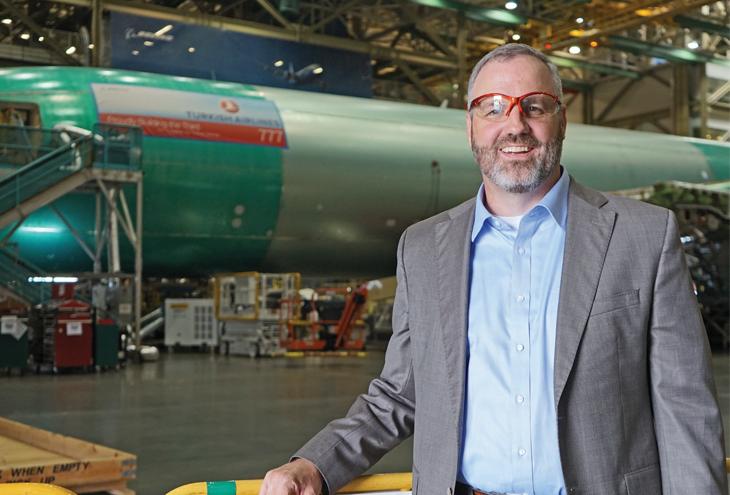When he was a high school student in Yakima, Wash., Christopher Payne knew exactly what he wanted to do for a living. His father, an electrical engineer, was an avid reader of architectural magazines, and seeing them around the house piqued Payne’s interest. “I would take the floor plans in the magazines and trace them to make my own grand house,” he recalls. “I wanted to be an architect.”
Payne’s high school offered a drafting class with two tracks one for architecture and the other for machine design. When he got assigned to the machine design course, Payne appealed to the teacher. “I said, ‘You don’t understand — I’m the guy who traces architectural magazines at home. I have to be in the architecture class,’” he recalls. “And the teacher said, ‘Yeah, you and everybody else. No.’”
In retrospect, the change in direction was the best thing that could have happened to Payne, this year’s winner of the AISES Executive Excellence Award. The unwanted and unexpected change in plans helped Payne, who is now director of Airplane Systems at Boeing, understand that his natural aptitude for tinkering and his interest in design and innovation come together in mechanical engineering. “I would have been a bad architect,” he says.
That may be debatable, but it’s obvious that Payne is an excellent engineer and leader. Today he leads a team of about 3,500 employees responsible for everything from the environmental controls, avionics, hydraulics, flight deck, and electrical systems to the onboard entertainment systems for the company’s commercial airplanes, both in production and in development. “It’s any system on the plane that makes it function. That’s why it’s such a big team,” he explains.
Payne directly supervises 14 executives and handles the day-to-day development and production work, which allows him to spend his time focusing on higher-level technical reviews and long-term strategy. “My responsibility is to have a strategic vision for five, 10, 20, or 30 years into the future,” he says. “What are we doing in the technical world for product development and disrupters we can bring into the market — and how do we get and grow the teams and leaders we need to do that? It’s a lot of the things a CEO or president of an organization would do.”
Within Boeing, Payne is working to establish a mentoring program for newly hired American Indians that will pair new employees with a seasoned Native staff member.
It’s also a role that meshes nicely with Payne’s philosophy of leadership, one that was heavily influenced by the book Geronimo: Leadership Strategies of an American Warrior. “He was a leader, but he also knew how to make everyone a leader. It wasn’t just him as the man to make it all happen,” Payne explains. “He was also doing everything he was asking to be done — he was willing to lead by example.”
Payne is keenly aware of his own opportunity to lead by example, particularly for Native students interested in STEM. His community involvement is extensive and includes helping to establish an AISES Professional Chapter in the Pacific Northwest. Within Boeing, Payne is working to establish a mentoring program for newly hired American Indians that will pair new employees with a seasoned Native staff member.
Outside Boeing, Payne is helping Northwest Indian College promote more STEM opportunities. The goal of this effort is to establish a pipeline to opportunities at Boeing as well as a transfer program to Western Washington University to allow students to pursue degrees in science and engineering.
The strategic thinking Payne uses in his day-to-day work at Boeing comes in handy as he works to open doors for Native students. Opportunities could potentially include a Boeing partnership on tribal land that comes with internships and apprenticeships to help participants pay for higher education. “A lot of students at the poverty level have no way out because they can’t afford college,” he says. “But if they can earn credits and get paid for products they make for Boeing, it’s a win-win. It’s exciting and sustainable and could live on.”













